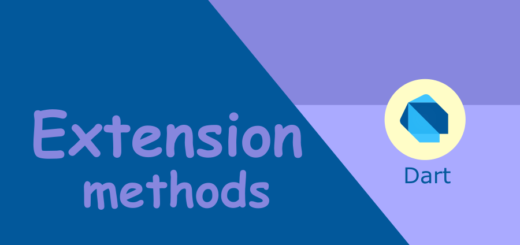Mixins in Dart : A Multiple Inheritance Alternative
In this tutorial, we’ll explore a language feature that is uncommon in other programming languages. Let’s unfold the utilization of mixins in Dart.
Dart is an electrifying language that supports a wide variety of modern programming features. It incorporates multilevel inheritance, lambda functions, and generic classes, among others.

Understanding Mixins in Dart
Mixins provide a means to reuse a class’s code across multiple class hierarchies without requiring inheritance. They help in avoiding deep hierarchies. In Dart, a ‘mixin’ involves incorporating the properties and methods of one class into another.
Declaring a Mixin
To declare a mixin in Dart, use the ‘mixin‘ keyword followed by a valid identifier. A mixin class cannot have constructors, ensuring seamless integration into multiple class hierarchies.
mixin ServerLog {
void logMessage(String message)
{
print('Log: $message ${DateTime.now()}');
}
}Here, we’ve defined a simple ServerLog that can be effortlessly integrated into other classes.
Applying a Mixin
Applying a mixin involves using the ‘with’ keyword followed by the mixin’s name in the class declaration. This action injects the functionality of the mixin into the class.
// using mixin
class Client with ServerLog{
String clientBrowser;
Client(this.clientBrowser);
void displayMessage()
{
print("Client Browser: $clientBrowser");
logMessage('$clientBrowser');
}
}Complete Program:
mixin ServerLog {
void logMessage(String message)
{
print('Log: $message ${DateTime.now()}');
}
}
// using mixin
class Client with ServerLog{
String clientBrowser;
Client(this.clientBrowser);
void displayMessage()
{
print("Client Browser: $clientBrowser");
logMessage('$clientBrowser');
}
}
void main() {
Client client = Client('Safari');
client.displayMessage();
}Client Browser: Safari
Log: Safari 2024-01-26 21:20:46.626817Is it possible to combine mixins?
That is possible, Dart allows combining multiple mixins using the with keyword, enabling the integration of multiple functionalities into a single class.
Open DartPad and write the following program:
mixin Student{
void info() => print("Showing student info..");
}
mixin Teacher{
void message() => print('Teacher message is loading');
}
class School with Student, Teacher
{
School.details(){ // named constructor
message();
info();
}
}
void main() {
School school = School.details();
}
Teacher message is loading
Showing student info..Mixins serve as a substitute for multiple inheritance. Traditional multiple inheritance can lead to complications, such as the Diamond Problem, where ambiguity arises due to the presence of two or more inherited classes with a common ancestor.
Avoiding Diamond Problem in Dart
Differing from conventional inheritance, mixins in Dart avoid the Diamond Problem, a complication that arises from multiple inheritance. Dart’s mixin mechanism ensures a linearization order, effectively resolving potential conflicts.
Mixins elevate the flexibility of Dart code by offering an alternative to conventional inheritance.
Best Practices for Mixins in Dart
- Keep Mixins Small
- Use Descriptive Mixin Names
- Understand the Linearization Order
In this tutorial, we’ve explored the fundamentals of mixing in Dart, a powerful feature for enhancing code modularity and reusability



